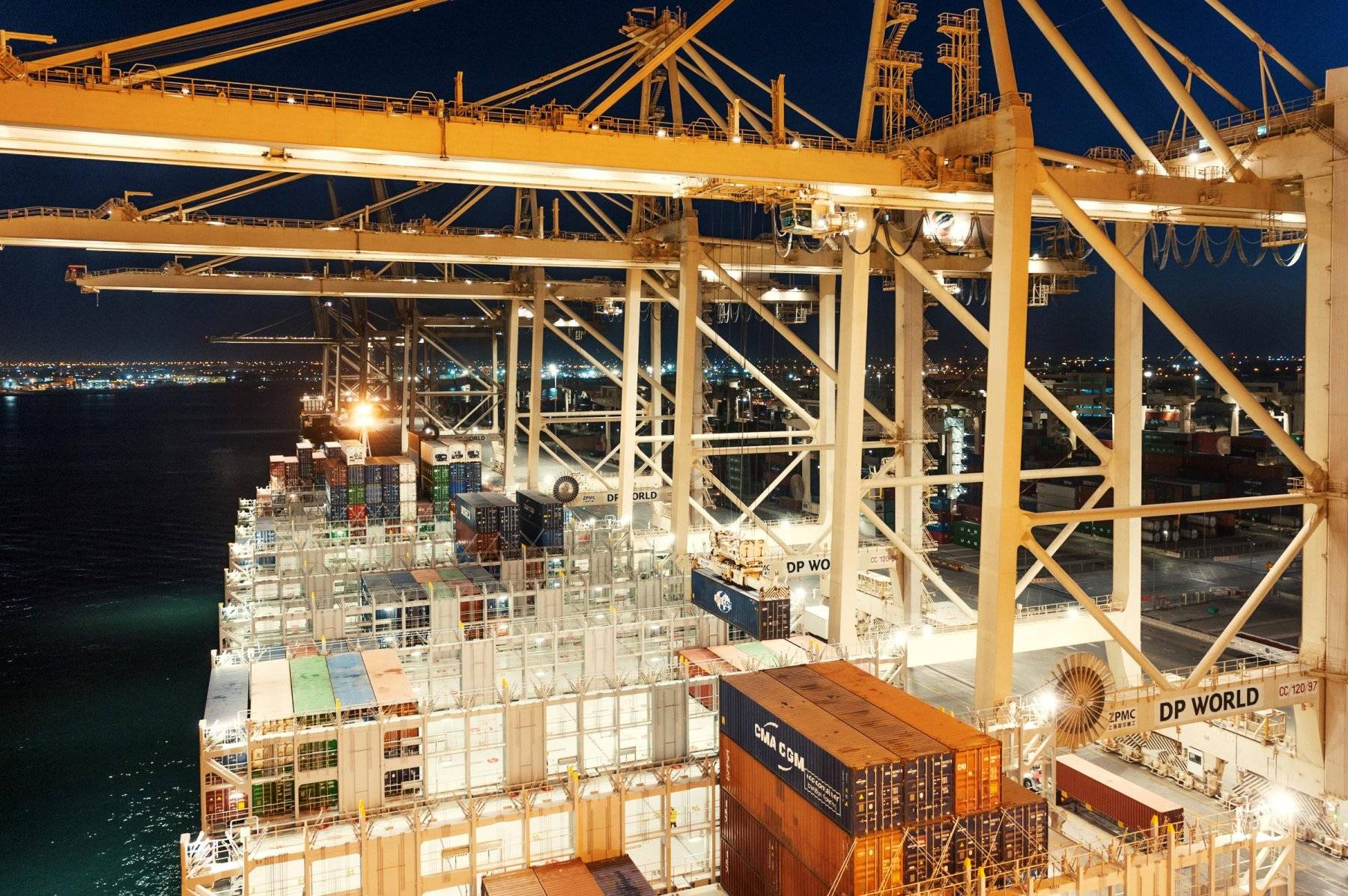UN/LOCODEs are used to simplify logistics and trade operations globally. After getting to know more about it, you will easily answer the question “How to search for UN/LOCODEs and port names?”.
With SeaRates’ logistics services and innovative solutions, you can easily find the most up-to-date and detailed information about ports around the world. Let’s start our port code lookup.
International Port Codes
Over time, cargo shipping has become more structured and jointly managed. Since 1981, the cooperation of the UNECE (United Nations Economic Commission for Europe) with leading transport and trade organizations has resulted in the simplification of trade operations around the world. The Code for Trade and Transport Locations - LOCODE - came into force. Currently, more than 103,030 locations/facilities in 249 countries are supported by the UN database and have LOCODEs. Additionally, obtaining a freight quote for shipments to these locations can help businesses accurately estimate costs and optimize their logistics planning.
Seaports, airports, and domestic destinations are also fully subject to this standardization, as they are objects of international trade, and therefore they are assigned a LOCODE.
The presence of LOCODEs on bills of lading, contracts, and waybills helps freight forwarders, carriers, shipping companies, and other parties in the logistics process manage and coordinate trade operations.
The ability to search by port name is a crucial feature for identifying specific seaports and accessing detailed information about them.
International seapports and airports are identified by a 5-digit code. For example:
Port of Churchill (Canada)
UN/LOCODE: CACHV
Let’s analyze what the code consists of.
Country: The beginning of UN/LOCODE contains standard country codes, which are Alpha-2 codes. In our example, Canada is denoted as “CA”.
Port identifiers: These are followed by characters to indicate a location within a given country. Our example with the Port of Churchill contains the designation “CHV”.
How to search World Sea Ports?
The SeaRates World Sea Ports app is even easier to use than Google Maps. We provide a complete list of Sea/River Ports and Container Terminals in countries around the world.
All you need to do is go to the "Select a country" field or choose from the list below the map. For each country, you will find the markings of ports and terminals on the map, or use the list below.
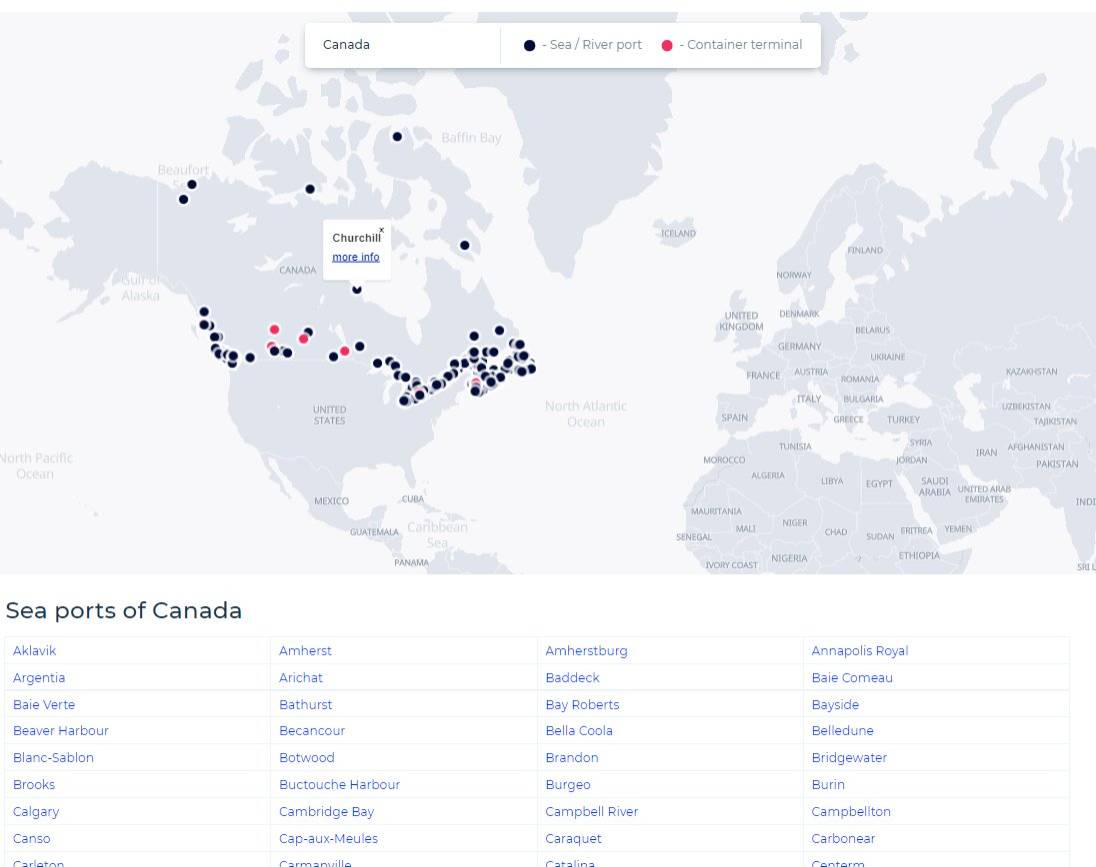
By clicking on a port, you will get detailed information such as general information (address, location, UN/LOCODE, size, etc.) and detailed information (port details, harbor characteristics, services (repairs, dock, and others), and much more).
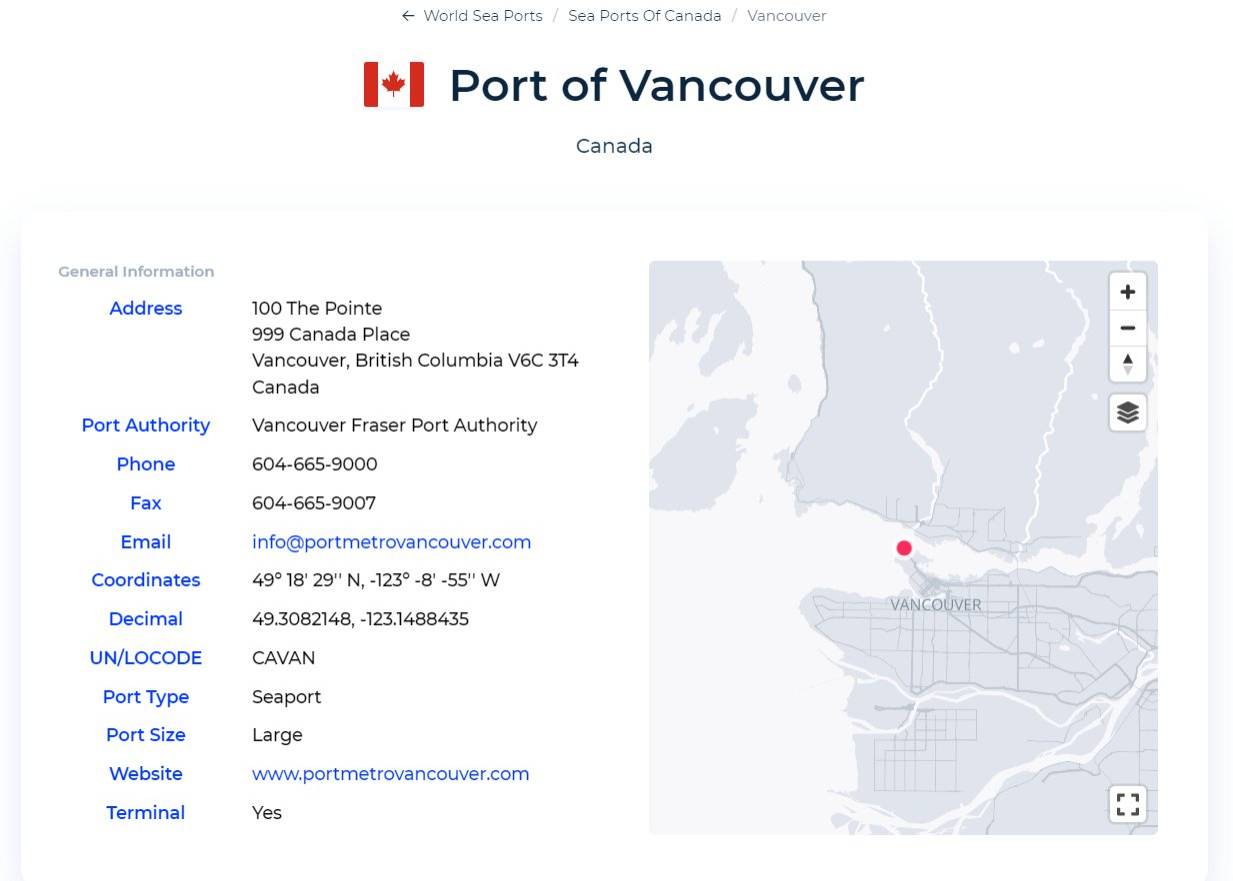
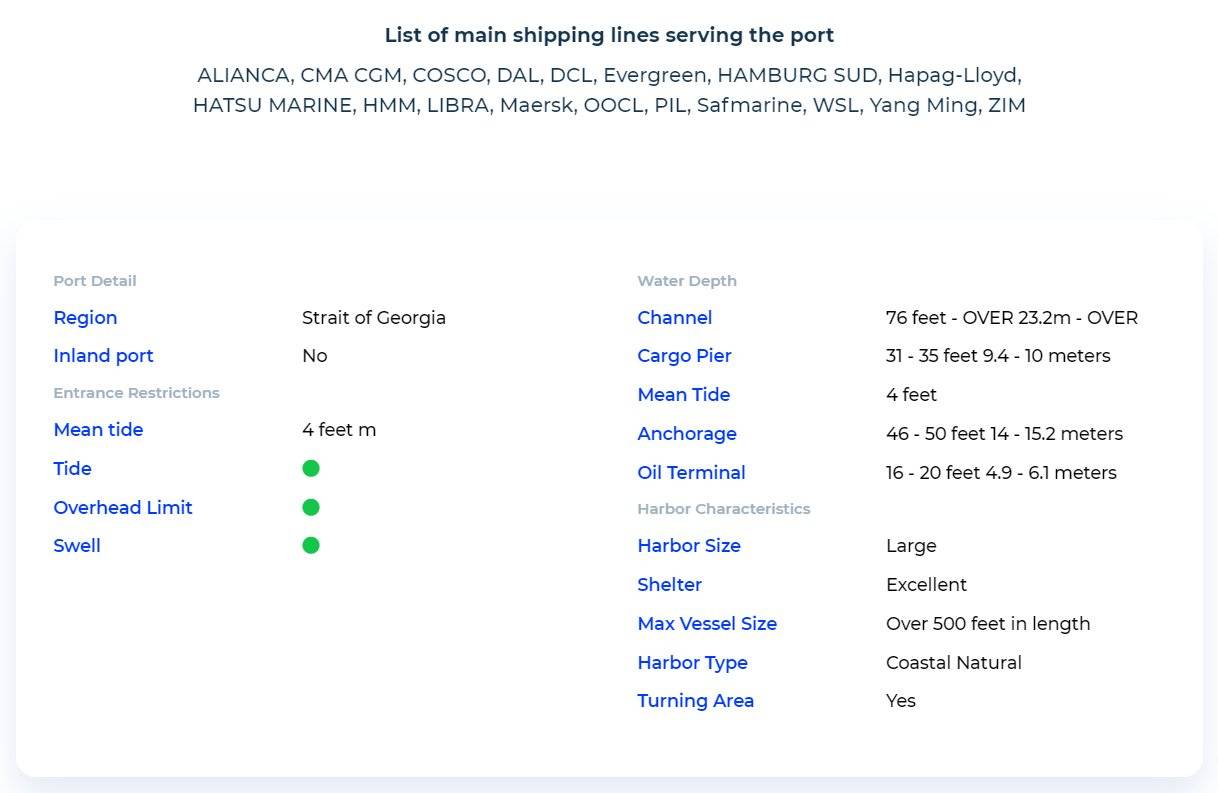
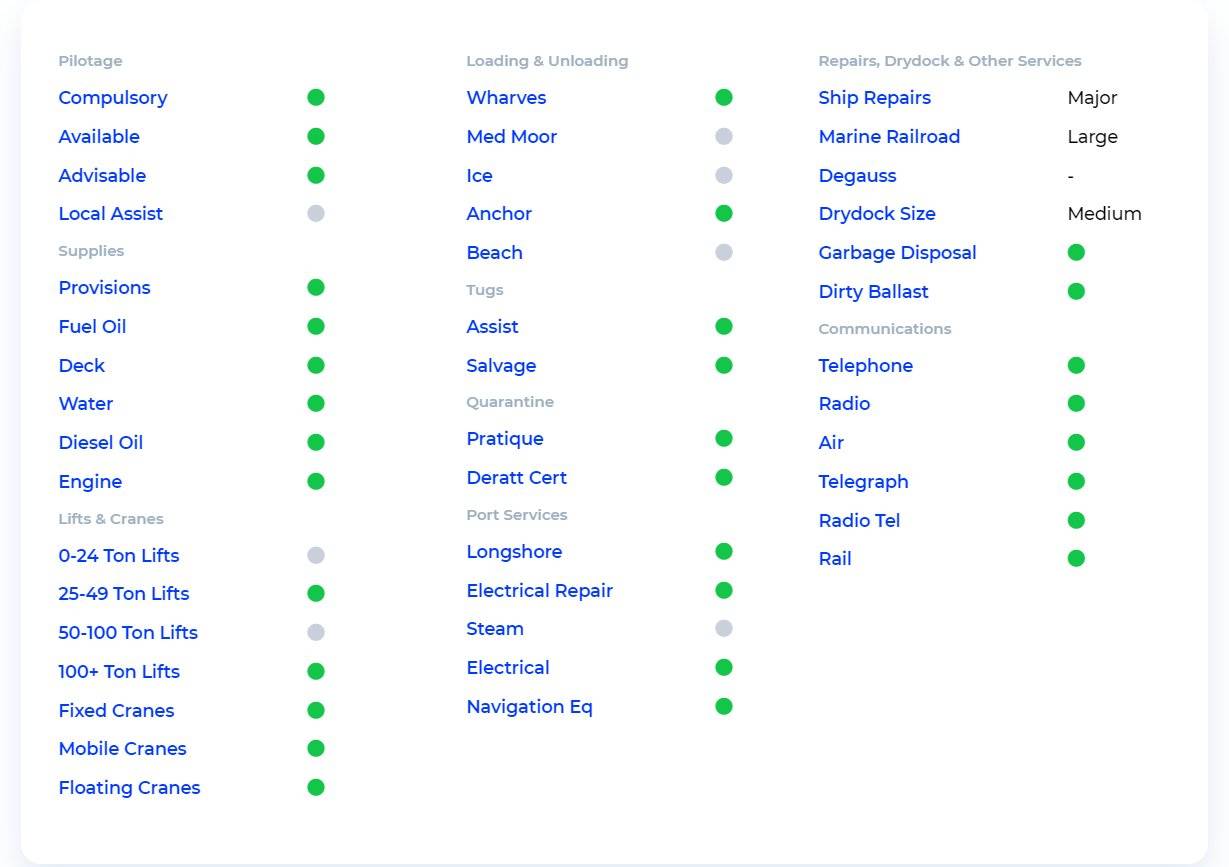
With this information, you can be sure that the size of the port is suitable for your carriage, that the necessary services are provided, or that the locations of the ports as transshipment points are convenient for you. Check out the World Sea Ports app for efficient supply chain planning.
What are the different types of ports?
A seaport refers to port operators and many facilities where your vessels are serviced, containers are handled, repairs are performed, and storage services are provided. Among all types of ports, seaports are the busiest and largest. The subtypes of seaports are as follows:
- cargo ports: there are container ports (for handling your cargo containers) and bulk ports (for handling bulk or break bulk cargo)
- cruise ports: for commercial passengers
A warm-water port is a port where the water remains free of ice, for example, due to the Gulf Stream, all year long.
Inland ports are located on lakes, river channels, and seas or oceans. This way, it allows vessels to unload closer to the destination.
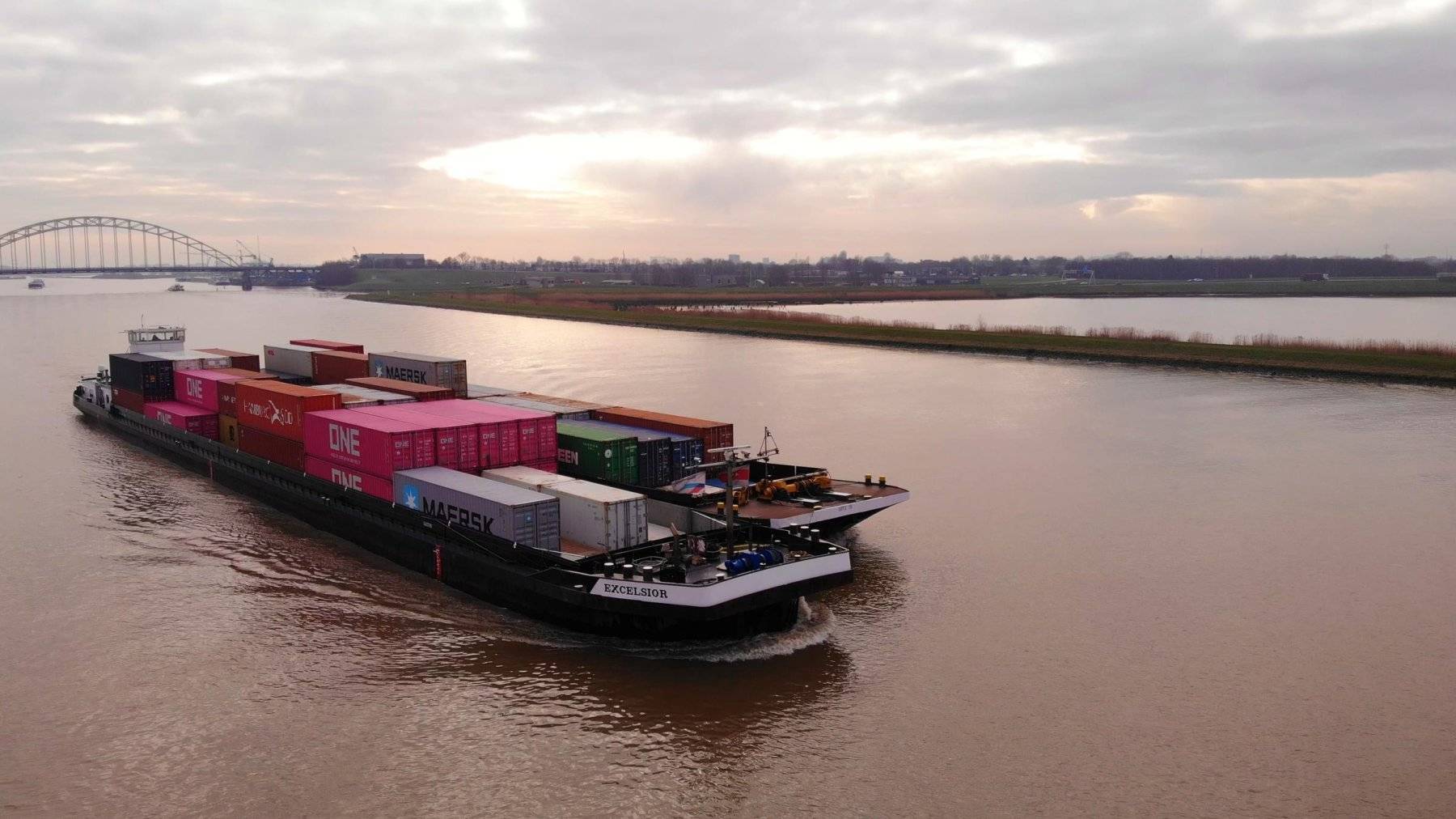
When planning transportation, dry ports are container terminals that are also often desirable as transshipment points as they are inland locations connected to railways, roads, or the nearest seaports.
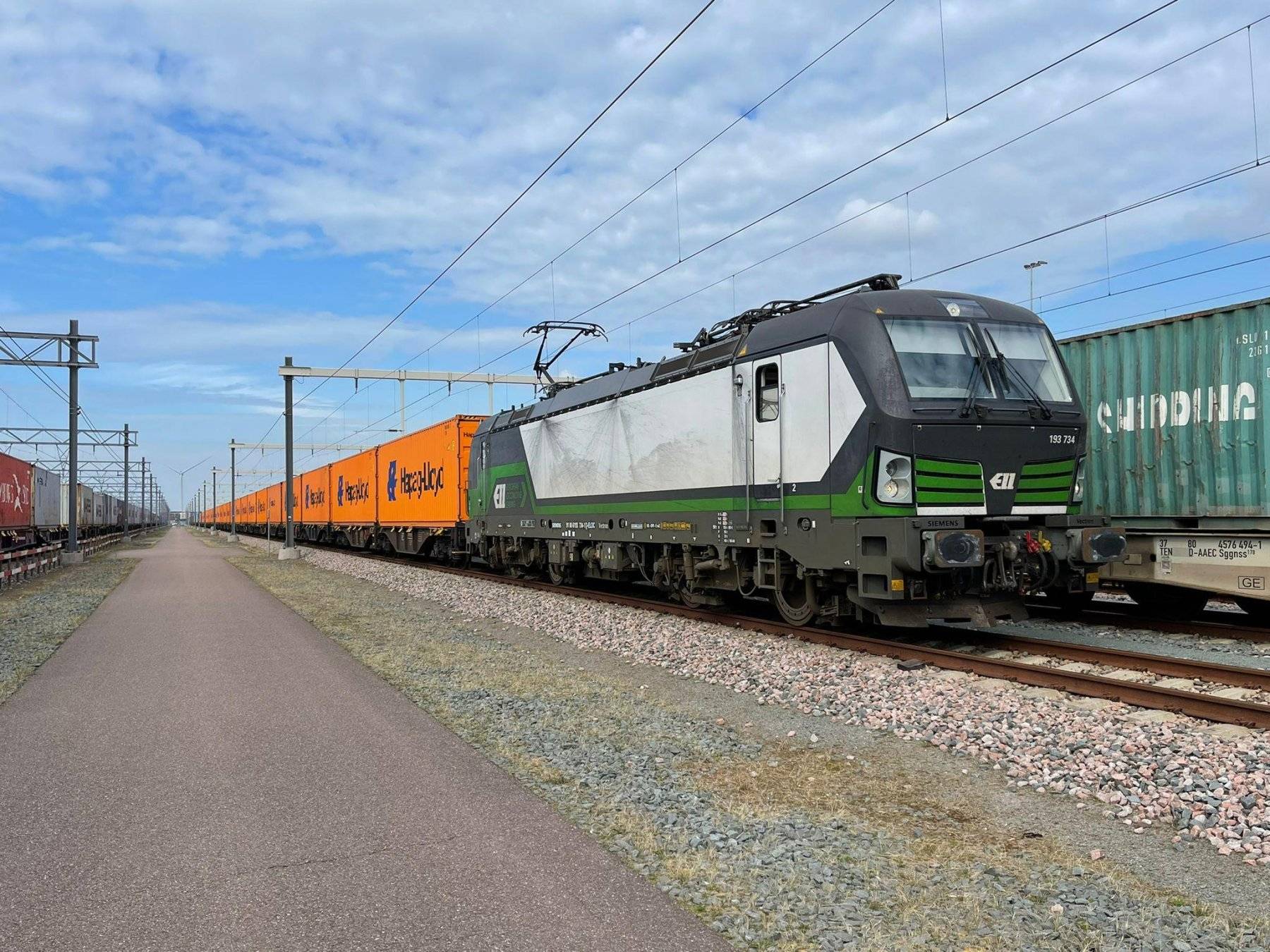
An airport is necessary for shipping and receiving cargo containers transported by air. It has at least one runway or helipad.
When will I need an airport, and when will I need a seaport?
It is worth exploring the advantages and features of each type of transportation to help you plan your logistics operations properly.
Air transportation is characterized by the following:
- speed of transportation
- high price for cargo weighing more than 500 kg
- small cargo capacity
- minimized risks of delays and downtime
Sea freight transportation has its own peculiarities and advantages:
- the ability to ship dangerous, bulky cargo and vehicles
- large capacity of vessels allows for the reliable carriage of groupage cargo
- versatility of transportation for bulk or break bulk cargo
- the ability to create your own CO2 calculator and minimize emissions for your route
Take into account your budget, desired delivery time, types, dimensions, and quantity of cargo. Fill out all your shipping needs in the Request a Quote form, and SeaRates Customer Support will offer you the best “Port to Port” or “Door to Door” shipment solutions and provide you with the cheapest freight rate on the market.
The port location also affects the freight rate when planning your route. Therefore, we invite you to check out the world's largest ports in terms of cargo handling per year. By clicking on the ports, you will be taken to an interactive map with detailed data.
Seaport Code List Top 10
- (CNSHA) Port of Shanghai, China - over 43 million TEUs
- (SGSIN) Port of Singapore, Singapore - over 36 million TEUs
- (CNSZX) Port of Shenzhen, China - over 25 million TEUs
- (CNNGB) Port of Ningbo, China - over 27 million TEUs
- (CNCAN) Port of Guangzhou, China - over 20 million TEUs
- (KRPUS) Port of Pusan, South Korea - over 20 million TEUs
- (CNHKG) Port of Hong Kong, China - over 19 million TEUs
- (CNTAO) Port of Qingdao, China - over 18 million TEUs
- (NLRTM) Port of Rotterdam, Netherlands - over 14 million TEUs
- (CNTSN) Port of Tianjin, China - over 15 million TEUs
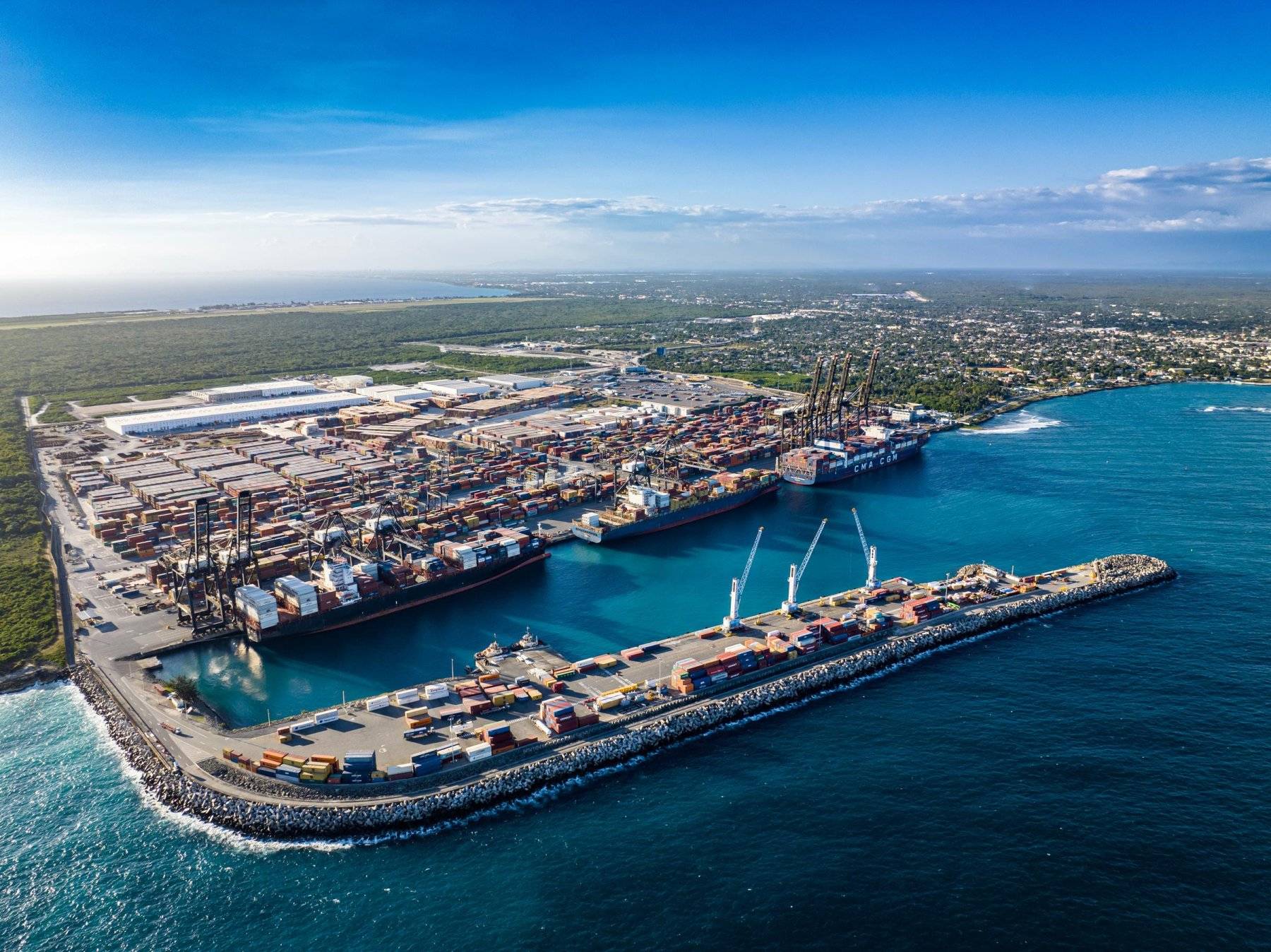
Airport Code List Top 10
- (HKG) Hong Kong International Airport - over 5.1 million metric tonnes of cargo
- (MEM) Memphis International Airport - over 4.5 million metric tonnes of cargo
- (PVG) Shanghai Pudong International Airport - over 3.7 million metric tonnes of cargo
- (ICN) Incheon International Airport - over 2.9 million metric tonnes of cargo
- (ANC) Ted Stevens Anchorage International Airport - over 2.8 million metric tonnes of cargo
- (DXB) Dubai International Airport - over 2.5 million metric tonnes of cargo
- (SDF) Louisville International Airport - over 2.4 million metric tonnes of cargo
- (HND) Tokyo Haneda Airport - over 2.2 million metric tonnes of cargo
- (SIN) Singapore Changi Airport - over 2 million metric tonnes of cargo
- (PEK) Beijing Capital International Airport - over 1.9 million metric tonnes of cargo
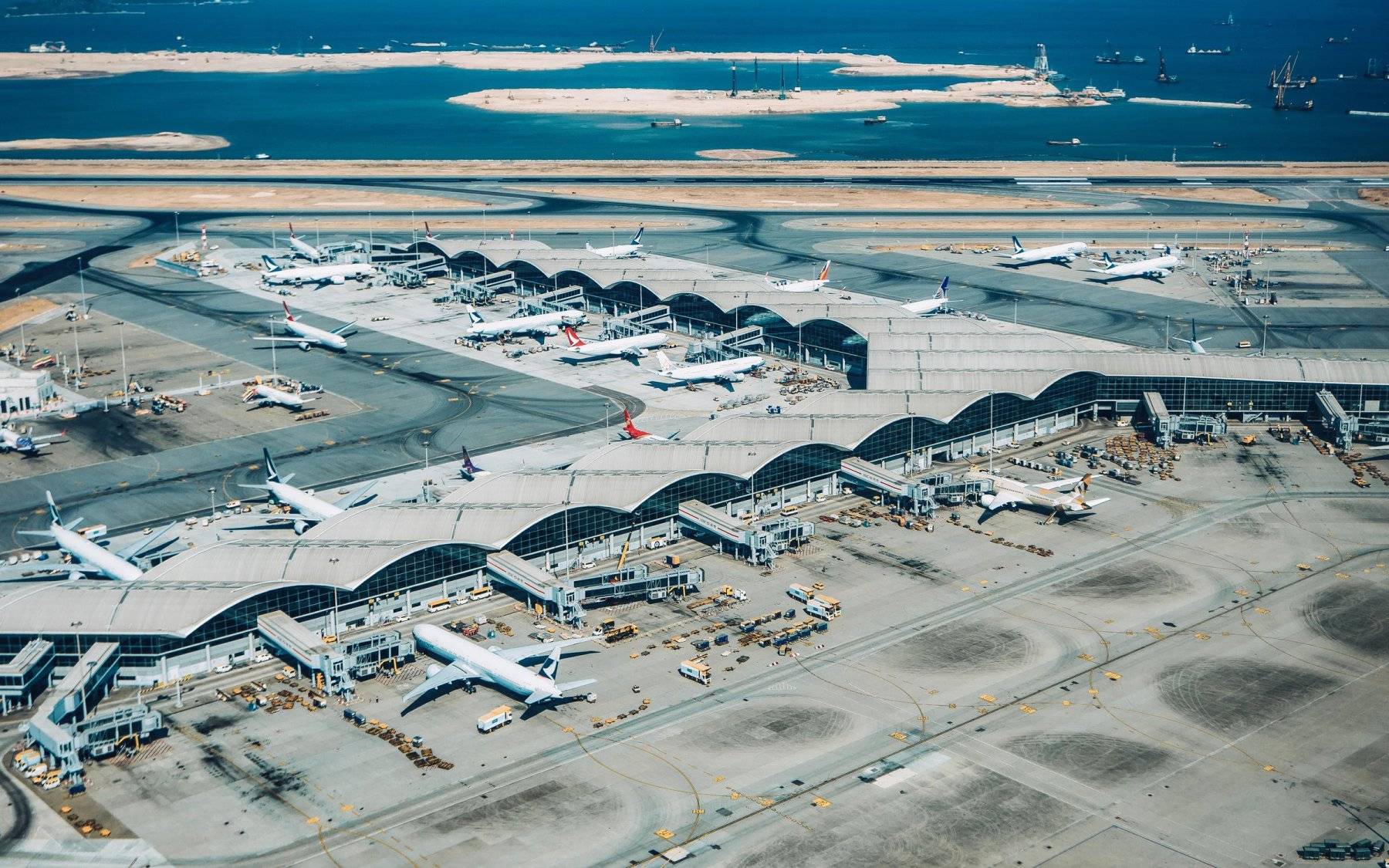
Conclusion
This guide covers the main highlights of seaports and airports that you need to consider when planning your deliveries.
The ports of the world, for the most part, handle all types of cargo but have different features and services that you are looking for. With SeaRates' expertise, it will be easier to make sure to choose the right ports for your routes.
Contact us at [email protected] for assistance with any of your freight shipping needs.
Explore more opportunities with SeaRates by [contacting us] respective to your interest category

